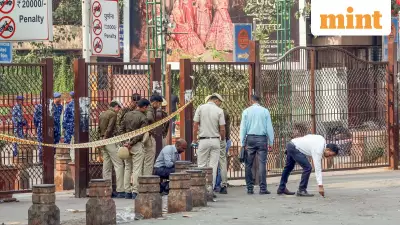
Jharkhand has witnessed a remarkable transformation in its security landscape with the number of Naxalite-affected districts dramatically decreasing from 22 in 2016 to just nine in 2025, according to police officials. This significant achievement comes after years of strategic counter-insurgency operations and development initiatives in previously troubled regions.
Strategic Operations Yield Results
The Jharkhand police attribute this success to multiple factors including intelligence-based operations, establishment of forward operating bases in severely affected areas, and an effective surrender and rehabilitation policy for extremists. Development works in freed areas have also played a crucial role in stabilizing regions previously dominated by Maoist activities.
The state's battle against Left Wing Extremism (LWE) has seen fluctuating fortunes since Jharkhand's formation in 2000. Records show that 230 LWE cases were registered in 2001, with incidents peaking in 2009 when 512 cases were registered across the state. During their peak influence, Maoists had established inter-state and inter-district corridors for movement and operated training camps at various locations including Jhumra in Bokaro and Budha Pahar in Latehar.
Steady Decline in LWE Incidents
Recent statistics reveal a consistent downward trend in LWE-related incidents. From 2019 to 2024, the numbers stood at 134, 126, 106, 90, 129, and 95 respectively. The current year shows further improvement with approximately 70 incidents recorded till date in 2025.
In terms of geographical spread, 2016 marked the maximum extent of LWE influence when the Union Ministry of Home Affairs (MHA) declared 22 out of 24 districts as extremist-affected, with only Jamtara and Sahibganj excluded from the list.
District-by-District Progress
The MHA had categorized 19 districts as LWE-affected before 2021. The first significant reduction came in 2021 when Koderma, Ramgarh, and Simdega were removed from the list, bringing the number down to 16 sensitive districts. Further progress was made in 2024 when five more districts—Dhanbad, East Singhbhum, Dumka, Hazaribag, and Palamu—were declared free from the LWE tag.
The most recent MHA list issued in March 2025 removed Ranchi and Gumla, reducing the affected districts to nine. According to official assessment, West Singhbhum remains the most LWE-affected district, followed by Latehar.
Seven other districts—Giridih, Bokaro, Chatra, Garhwa, Lohardaga, Khunti, and Kharsawan Seraikela—are now classified as 'legacy and thrust districts' where extremism has either been completely eradicated or is in its final stages.
Current Security Challenges
Inspector General (Operation) and state police spokesman Michael Raj provided insights into the current scenario. "Police are faced with a major challenge only from a group of top Maoists hiding in Saranda forest of West Singhbhum", he stated. "The Maoist groups are, however, also present in small numbers of two to three in Bokaro, Hazaribag, Chatra, Palamu and Netarhat."
Raj also identified specific active groups: "JJMP, which has a few members, is active in Palamu. Tritiya Prastuti Committee is active in Latehar."
The sustained efforts of security forces combined with developmental initiatives have significantly weakened the Naxalite movement in Jharkhand, bringing hope for complete eradication in the coming years.





